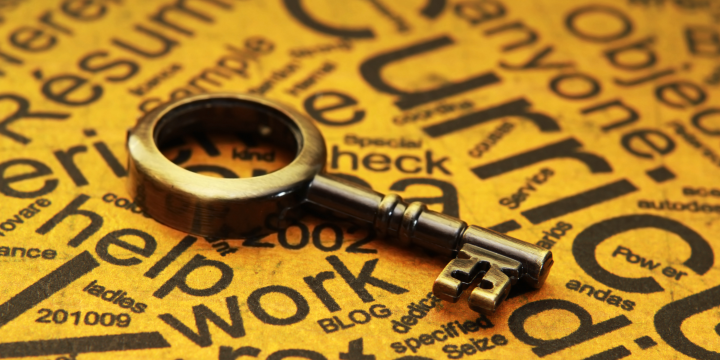In recent years, the rise of technology has led to the development of various sleep tracking devices that promise to enhance the quality of sleep. These devices, ranging from wearable gadgets to smartphone applications, have gained popularity among individuals seeking to understand their sleep patterns better. By providing insights into sleep duration, quality, and cycles, these tools aim to empower users to make informed decisions about their sleep habits.
As society becomes increasingly aware of the importance of sleep for overall health and well-being, the demand for effective sleep tracking solutions continues to grow. Sleep tracking devices utilize a combination of sensors and algorithms to monitor various physiological parameters during sleep. They can measure heart rate, movement, and even environmental factors such as noise and light levels.
This data is then analyzed to provide users with a comprehensive overview of their sleep quality. With the ability to track sleep trends over time, these devices offer valuable insights that can help individuals identify patterns and make necessary adjustments to improve their rest. As more people turn to these technologies, understanding their functionality and benefits becomes essential for anyone looking to enhance their sleep experience.
Key Takeaways
- Sleep tracking devices can help individuals monitor and improve their sleep quality.
- Understanding sleep cycles and quality is essential for utilizing sleep tracking devices effectively.
- Important features to look for in a sleep tracking device include accuracy, comfort, and data analysis capabilities.
- Choosing the right sleep tracking device involves considering personal preferences, budget, and specific sleep tracking needs.
- Utilizing sleep tracking data can help individuals set realistic sleep goals and improve their sleep hygiene.
Understanding Sleep Cycles and Quality
Understanding Sleep Cycles
Sleep is not a uniform state; rather, it consists of several stages that cycle throughout the night. These stages include light sleep, deep sleep, and REM (rapid eye movement) sleep, each playing a vital role in physical and mental restoration.
The Importance of Each Sleep Stage
Light sleep serves as a transitional phase, while deep sleep is essential for bodily recovery, and REM sleep is critical for cognitive functions such as memory consolidation and emotional regulation. Quality sleep is characterized by not only the total duration but also the proportion of time spent in each stage. A person may spend eight hours in bed but still wake up feeling fatigued if they do not achieve sufficient deep or REM sleep.
Improving Sleep Quality with Sleep Tracking Devices
Sleep tracking devices can help users identify how much time they spend in each stage, allowing them to pinpoint areas for improvement. By understanding these cycles, individuals can make informed choices about their bedtime routines and environmental factors that may influence their overall sleep quality.
Features to Look for in a Sleep Tracking Device
When selecting a sleep tracking device, several features should be considered to ensure it meets individual needs effectively. One of the most important aspects is accuracy; a device that provides precise data on sleep stages and duration is essential for meaningful insights. Many advanced devices utilize multiple sensors to gather comprehensive data, including heart rate variability and movement patterns, which can enhance the accuracy of sleep analysis. Another critical feature is user-friendliness. A device should be easy to set up and operate, with an intuitive interface that allows users to access their data effortlessly.
Additionally, compatibility with smartphones or other devices can enhance the user experience by enabling seamless data synchronization and analysis through dedicated apps. Other desirable features may include personalized recommendations based on sleep patterns, integration with other health tracking systems, and even smart alarms that wake users during lighter sleep stages for a more refreshing awakening.
Choosing the Right Sleep Tracking Device for You
| Device Name | Price | Accuracy | Battery Life | Features |
|---|---|---|---|---|
| Fitbit Charge 4 | 149.95 | High | Up to 7 days | Heart rate monitor, sleep stages tracking |
| Apple Watch Series 6 | 399 | High | Up to 18 hours | Heart rate monitor, sleep tracking, blood oxygen sensor |
| Garmin Vivosmart 4 | 129.99 | High | Up to 7 days | Heart rate monitor, sleep tracking, stress tracking |
Selecting the right sleep tracking device can be a daunting task given the plethora of options available on the market. Individuals should first assess their specific needs and preferences. For instance, some may prefer a wearable device like a smartwatch or fitness tracker that can monitor sleep alongside other health metrics, while others might opt for a non-wearable option like a bedside monitor that tracks sleep without any physical contact.
Budget is another significant factor in the decision-making process. While some high-end devices offer advanced features and extensive data analysis capabilities, there are also budget-friendly options that provide basic tracking functionalities. It is essential for users to strike a balance between their financial constraints and the features they deem necessary for effective sleep monitoring.
Reading reviews and seeking recommendations can also aid in making an informed choice that aligns with personal preferences and lifestyle.
How to Use Sleep Tracking Data to Improve Sleep Quality
Once individuals have chosen a suitable sleep tracking device, the next step involves utilizing the collected data to enhance sleep quality. The first step is to regularly review the insights provided by the device, focusing on patterns related to sleep duration, efficiency, and stages. By identifying trends over time, users can pinpoint specific factors that may be contributing to poor sleep quality, such as irregular bedtimes or excessive screen time before bed.
Incorporating this data into daily routines can lead to significant improvements in sleep hygiene. For example, if a user notices that they consistently experience restless nights after consuming caffeine in the afternoon, they may choose to limit their intake or switch to decaffeinated options. Similarly, if environmental factors such as noise or light are identified as disruptors, users can take steps to create a more conducive sleeping environment by using blackout curtains or white noise machines.
Setting Realistic Sleep Goals with a Tracking Device
Setting Achievable Targets
For instance, if an individual typically sleeps for six hours but aims for eight hours of quality rest, they can gradually increase their bedtime by 15-30 minutes each week until they reach their goal.
Prioritizing Quality Over Quantity
Moreover, it is essential for users to recognize that quality often trumps quantity when it comes to sleep. Aiming for uninterrupted deep and REM sleep should be prioritized over merely extending total hours spent in bed.
Improving Sleep Quality with Data Insights
By using the insights gained from their tracking device, individuals can set specific goals related to improving their time spent in these critical stages of sleep, ultimately leading to more restorative rest.
Utilizing Sleep Tracking for Better Sleep Hygiene
Sleep hygiene refers to the practices and habits that promote consistent and uninterrupted sleep. By leveraging data from sleep tracking devices, individuals can identify areas where their hygiene may be lacking and make necessary adjustments. For example, if a user discovers that they frequently wake up during the night due to disturbances in their environment, they may consider implementing strategies such as establishing a calming bedtime routine or reducing exposure to screens before sleeping.
Additionally, maintaining a consistent sleep schedule is vital for good sleep hygiene. Sleep tracking devices can help users monitor their bedtime and wake-up times, encouraging them to stick to a regular routine even on weekends or days off. This consistency reinforces the body’s natural circadian rhythms, making it easier to fall asleep and wake up feeling refreshed.
Incorporating Sleep Tracking into a Healthy Lifestyle
Integrating sleep tracking into a broader healthy lifestyle can yield significant benefits beyond just improved rest. Quality sleep is closely linked to various aspects of physical health, including immune function, weight management, and mental well-being. By prioritizing sleep through tracking devices, individuals can create a holistic approach to health that encompasses nutrition, exercise, and stress management.
For instance, users may find that regular physical activity positively impacts their sleep quality. By monitoring both exercise habits and sleep patterns through their device, they can identify optimal times for workouts that lead to better rest at night. Similarly, maintaining a balanced diet rich in nutrients can support overall health and enhance sleep quality when combined with effective tracking practices.
Monitoring and Managing Sleep Disorders with Tracking Devices
For those suffering from sleep disorders such as insomnia or sleep apnea, tracking devices can serve as valuable tools for monitoring symptoms and managing conditions effectively. By providing detailed insights into sleeping patterns and disturbances, these devices can help users identify triggers or behaviors that exacerbate their conditions. This information can be shared with healthcare professionals for more tailored treatment plans.
Moreover, many advanced tracking devices offer features specifically designed for individuals with known sleep disorders. For example, some devices can detect irregular breathing patterns associated with sleep apnea and alert users when they occur. This real-time feedback allows individuals to take proactive measures or seek medical advice when necessary.
Maximizing Sleep Quality with the Help of Sleep Tracking Apps
In addition to physical devices, numerous apps complement sleep tracking efforts by providing additional insights and recommendations based on collected data. These applications often feature user-friendly interfaces that allow individuals to visualize their sleeping patterns over time easily. Many also offer personalized tips for improving sleep hygiene based on specific trends observed in the user’s data.
Furthermore, some apps incorporate mindfulness techniques or guided meditations designed to promote relaxation before bedtime. By integrating these practices into their nightly routines alongside data from their tracking devices, users can create a comprehensive approach to enhancing their overall sleep quality.
The Future of Sleep Tracking Devices and Sleep Quality
As technology continues to evolve rapidly, the future of sleep tracking devices looks promising. Innovations in sensor technology and artificial intelligence are likely to lead to even more accurate and insightful tools for monitoring sleep patterns. With an increasing focus on health and wellness in society, these devices will play an essential role in helping individuals prioritize rest as part of a balanced lifestyle.
Ultimately, understanding how to leverage these tools effectively will empower users to take control of their sleep health. By combining data-driven insights with practical lifestyle changes, individuals can work towards achieving optimal rest and overall well-being in an increasingly fast-paced world. The journey toward better sleep quality is not just about tracking; it’s about fostering habits that lead to restorative rest and improved health outcomes for years to come.
FAQs
What are sleep tracking devices?
Sleep tracking devices are wearable or non-wearable gadgets that monitor and record various aspects of your sleep, such as duration, quality, and patterns. These devices use sensors to track movements, heart rate, and sometimes even breathing patterns to provide insights into your sleep.
How do sleep tracking devices work?
Sleep tracking devices work by using sensors to monitor your movements, heart rate, and sometimes even breathing patterns while you sleep. The data collected is then analyzed to provide information about the duration and quality of your sleep.
What are the benefits of using sleep tracking devices?
Sleep tracking devices can help you gain insights into your sleep patterns, identify potential sleep disturbances, and make adjustments to improve the quality of your sleep. They can also provide data to help you understand how lifestyle factors, such as exercise and diet, may impact your sleep.
Are sleep tracking devices accurate?
The accuracy of sleep tracking devices can vary depending on the type of sensors used and the device’s design. While they may not be as accurate as professional sleep studies conducted in a lab, they can still provide valuable insights into your sleep patterns and trends.
What are some popular sleep tracking devices?
Popular sleep tracking devices include wearable devices such as fitness trackers and smartwatches, as well as non-wearable devices like bedside sleep monitors and smartphone apps. Some well-known brands in this space include Fitbit, Garmin, Apple, and Withings.
Are there any potential drawbacks to using sleep tracking devices?
Some potential drawbacks of using sleep tracking devices include concerns about data privacy and security, as well as the possibility of becoming overly fixated on sleep metrics, which could contribute to sleep-related anxiety. It’s important to use these devices as a tool for improving sleep, rather than becoming overly reliant on the data they provide.













